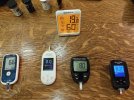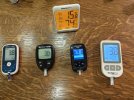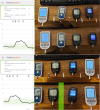Diagnosed T2, Oct 2023 - HbA1c: 89 mmol/mol (repeat @ 92 mmol/L)
Weight: 100.6 Kg, BMI: 34.6.
Triglyceride 9.11 mmol/L.
Made diet changes, increased exercise gradually, set out to lose weight via calorie counting.
Did not adopt a very low carb diet - averaged around 150g per day.
Started Metformin,1500mg per day as of Nov 15th.
Switched to Xigduo (10mg Dapagliflozin & 2000mg Metformin per day) as of Dec 21st.
Jan 24th 2024 - HbA1c: 39 mmol/mol. Weight: 88.5 Kg, BMI: 30.4. Triglyceride 1.55 mmol/L
Feb/March - Reduced carbs quite a bit while analysing BG response using a CGM/screenshots.
June 26th 2024 - HbA1c: 32 mmol/mol. Weight: 70.2 Kg, BMI: 24.3. Triglyceride 1.2 mmol/L.
Sept 6th 2024 - Meds reduced - 10mg Dapagliflozin (Forxiga) & 1000mg Metformin per day
Sept 18th 2024 - Hba1c: 34 mmol/mol.
Weight 67.8 Kg, BMI 23.5.
Triglyceride 1.07 mmol/L.
Oct to Dec - Went off the rails eating and drinking far too much, gained weight rapidly.
Dec 19th 2024 - HbA1c 36 mmol/mol.
Weight 72.4 Kg, BMI 24.9.
Triglyceride 1.7 mmol/L.
Jan 7th 2025 - Meds reduced - 10mg Dapagliflozin (Forxiga) & 500mg Metformin per day.
April 16th 2025 -
HbA1c 35 mmol/mol, Weight 76.5 Kg, BMI 26.3
Single best Type 2 remission resource on the internet at this time:
Prof Roy Taylor Interview


